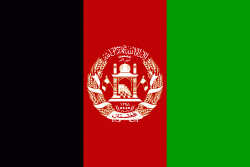Wazir Akbar Khān (Wazīr Akbar Khān)
Wazīr Akbar Khān (Pashto/Dari: ; 1816-1847), born Mohammad Akbar Khān and also known as Amīr Akbar Khān, was an Afghan prince, general, emir for a year, and finally wazir/heir apparent to Dost Mohammad Khan until his death in 1847. His fame began with the 1837 Battle of Jamrud, while attempting to regain Afghanistan's second capital Peshawar from the Sikh Empire.
Wazir Akbar Khan was militarily active in the First Anglo-Afghan War, which lasted from 1839 to 1842. He is prominent for his leadership of the national party in Kabul from 1841 to 1842, and his massacre of Elphinstone's army at the Gandamak pass before the only survivor, the assistant surgeon William Brydon, reached the besieged garrison at Jalalabad on 13 January 1842. Wazir Akbar Khan became the emir of Afghanistan in May 1842, and ruled until Dost Mohammad Khan's return in 1843. In 1847 Wazir Akbar Khan died of cholera.
Akbar was born as Mohammad Akbar Khan in 1816 to Emir Dost Mohammad Khan of Afghanistan and Mermən Khadija Popalzai. Dost Mohammad Barakzai had 16 wives, 27 sons (including Wazir Akbar Khan) and 25 daughters.
Wazir Akbar Khan was militarily active in the First Anglo-Afghan War, which lasted from 1839 to 1842. He is prominent for his leadership of the national party in Kabul from 1841 to 1842, and his massacre of Elphinstone's army at the Gandamak pass before the only survivor, the assistant surgeon William Brydon, reached the besieged garrison at Jalalabad on 13 January 1842. Wazir Akbar Khan became the emir of Afghanistan in May 1842, and ruled until Dost Mohammad Khan's return in 1843. In 1847 Wazir Akbar Khan died of cholera.
Akbar was born as Mohammad Akbar Khan in 1816 to Emir Dost Mohammad Khan of Afghanistan and Mermən Khadija Popalzai. Dost Mohammad Barakzai had 16 wives, 27 sons (including Wazir Akbar Khan) and 25 daughters.
Map - Wazir Akbar Khān (Wazīr Akbar Khān)
Map
Country - Afghanistan
 |
 |
| Flag of Afghanistan | |
Human habitation in Afghanistan dates back to the Middle Paleolithic era, and the country's strategic location along the historic Silk Road has led it to being described, picturesquely, as the ‘roundabout of the ancient world’. Popularly referred to as the graveyard of empires, the land has historically been home to various peoples and has witnessed numerous military campaigns, including those by the Persians, Alexander the Great, the Maurya Empire, Arab Muslims, the Mongols, the British, the Soviet Union, and most recently by a US-led coalition. Afghanistan also served as the source from which the Greco-Bactrians and the Mughals, amongst others, rose to form major empires. The various conquests and periods in both the Iranian and Indian cultural spheres made the area a center for Zoroastrianism, Buddhism, Hinduism, and later Islam throughout history.
Currency / Language
| ISO | Currency | Symbol | Significant figures |
|---|---|---|---|
| AFN | Afghan afghani | Ø‹ | 2 |
| ISO | Language |
|---|---|
| PS | Pashto language |
| FA | Persian language |
| TK | Turkmen language |
| UZ | Uzbek language |















